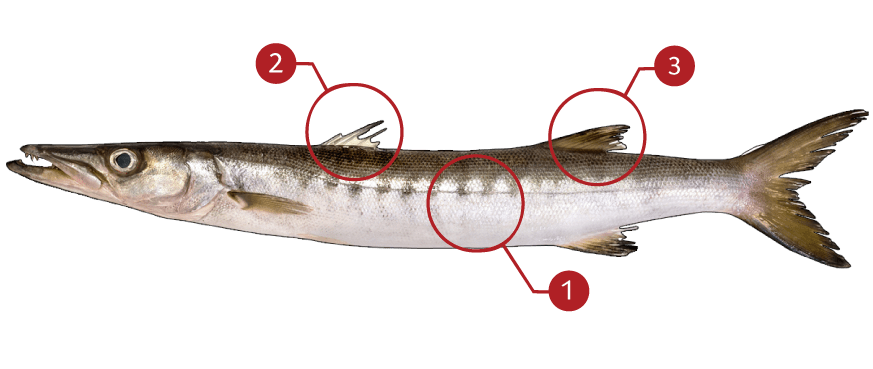BARRACUDA
How to identify a Barracuda
The first dorsal fin has five spines; the second has ten soft rays. The first rays of the second dorsal and anal fins reach to or beyond the tips of the last rays when the fins are depressed. There are 75-90 scales along the lateral line and the preopercle is rounded. The maxilla extends back as far as the eyes. Adults have irregular black blotches on the lower flanks, especially near the tail. It is the only species of barracuda that has blotches.Its habit of “tagging along” with divers while opening and closing its mouth has given more than one diver the faith to walk on water; nevertheless, barracudas do not usually attack unless speared or provoked. The barracuda should be regarded as dangerous because of its ability to inflict serious injury, in or out of water.
Where to catch Barracuda
The barracuda occurs in all tropical seas except the Eastern Pacific and can be found offshore and inshore around reefs, piers, wrecks, sandy and grassy flats, and wherever smaller fish congregate. Smaller barracudas sometimes school, but the large fish are almost always loners.
IDENTIFICATION

| |
Adults have irregular black blotches on the lower flanks |
| |
The first dorsal fin has five spines |
| |
The second dorsal fin has ten soft rays |
TARGET AREAS
|
|
Acknowledgements: We thank TAKEMEFISHING.org (www.takemefishing.org), Wisconsin Department of Natural Resources, Indiana Department of Natural Resources for their contributions to these FISH FACTS.

